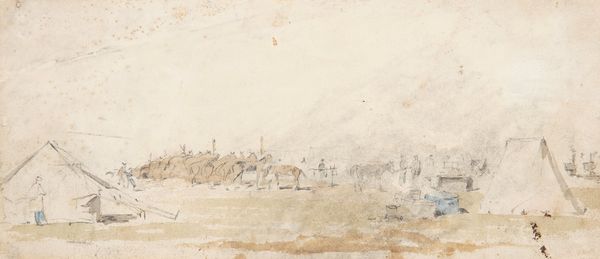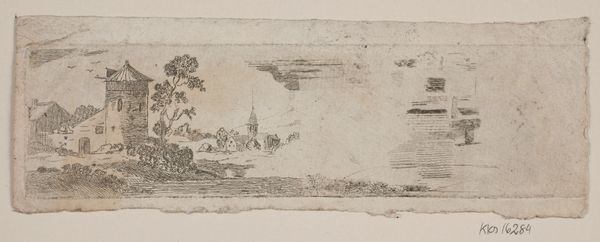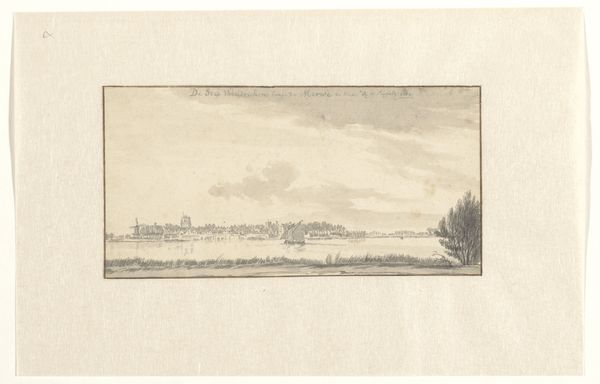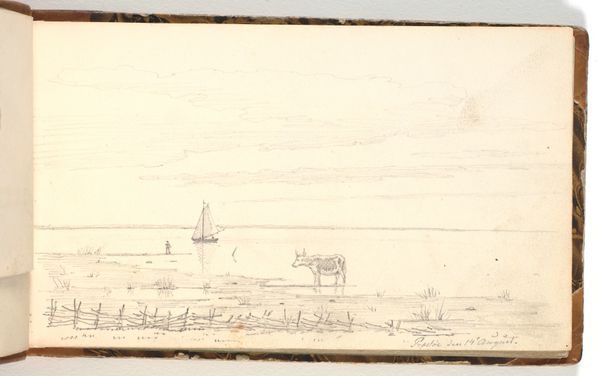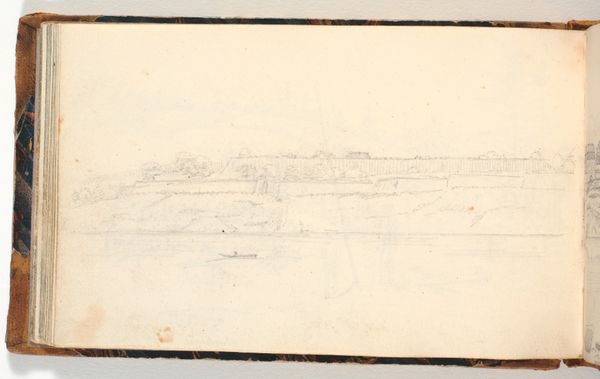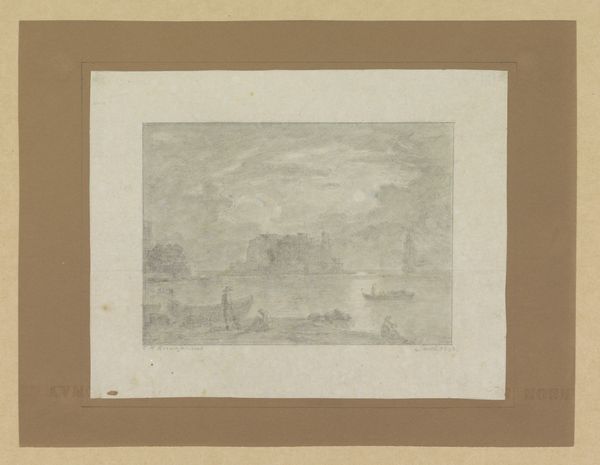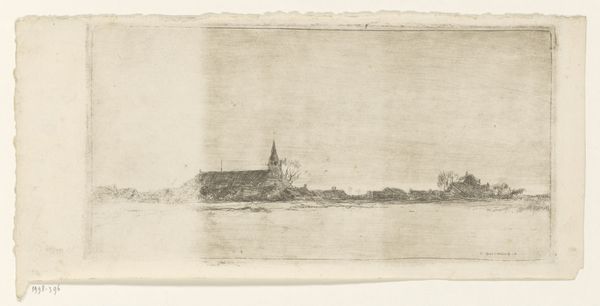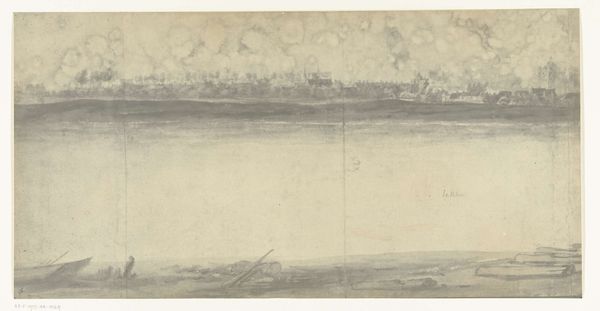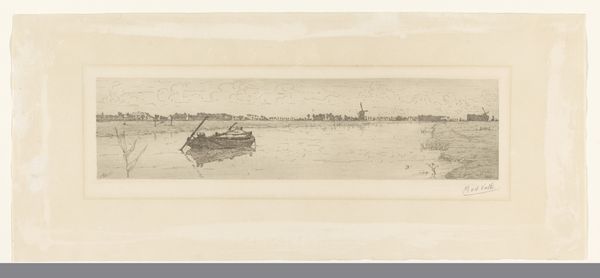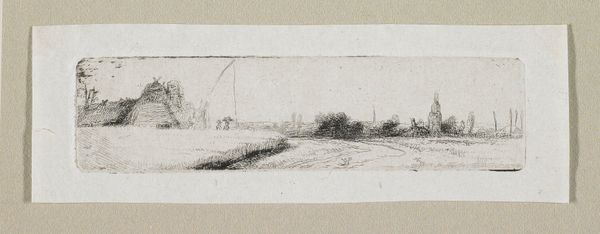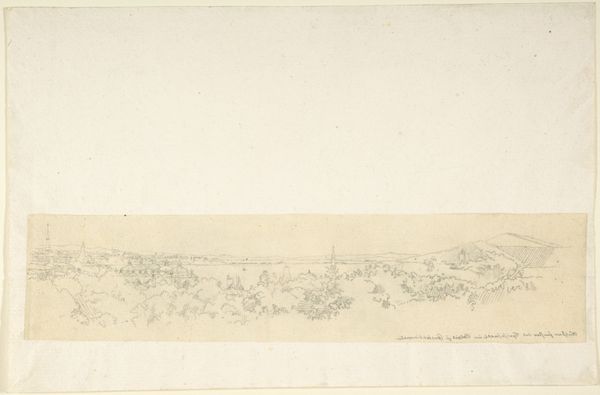
watercolor
#
water colours
#
landscape
#
etching
#
watercolor
#
watercolor
Dimensions: height 86 mm, width 126 mm
Copyright: Rijks Museum: Open Domain
Curator: This watercolor, titled "Gezicht over weiland met water op dorpssilhouet," which translates to "View over meadow with water on village silhouette," was created sometime between 1855 and 1930, artist being Dirk Arnoldus Tavenraat, and currently resides in the Rijksmuseum. Editor: There's such a muted stillness to it. Almost a meditative quality in its simplicity. The color palette is really restricted, soft greys and tans. It almost fades into the background as if the landscape itself is dematerializing. Curator: It’s a fascinating snapshot of rural life, or perhaps more accurately, rural land use. You see the suggestion of human presence with the distant silhouette of buildings; it could almost be considered social realism. Considering that era, can't you sense this landscape becoming impacted, or maybe even polluted with encroaching industrialization? Editor: Possibly. Though what resonates with me here are the aesthetic choices, the way the landscape, as you term it, becomes this near-abstract plane. There's very little definition. In some ways, I see parallels with, say, Agnes Martin. Even the damp-looking imperfections could, if reframed, signal something akin to protest, against rigid formal composition in the visual arts. What statements do you think the painter could have been trying to express through this art? Curator: Remember the Dutch identity tied closely to landscape, particularly managed landscapes like polders reclaimed from the sea. Maybe this is about belonging, labor, and our connection to natural resources, though filtered through a lens of nascent industrial unease? What makes art special is the capacity of the viewer's mind to relate that artistic view to their individual sense of things, no? It is more than a simple image, more than an amalgamation of colors and shades: it has the ability to transmit. Editor: I see that! The socio-political context you frame is valid. Still, I read Tavenraat's treatment more like an intimate contemplation of space and light, and even if his choices did signify "protest," such rebellion probably operated only implicitly in the painter's mind. It invites, nonetheless, us to ask the difficult questions surrounding industrialism and its relation to the working person's sentiment and sense of national pride. Curator: It's precisely that invitation to inquiry that gives pieces such as these their continuing charge. Thank you, those are great and insightful points! Editor: Likewise. A deceptively quiet piece, really!
Comments
No comments
Be the first to comment and join the conversation on the ultimate creative platform.
